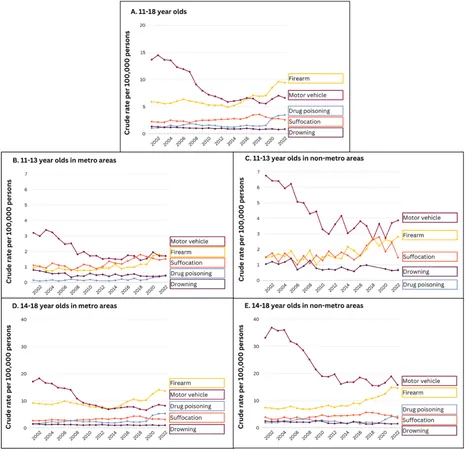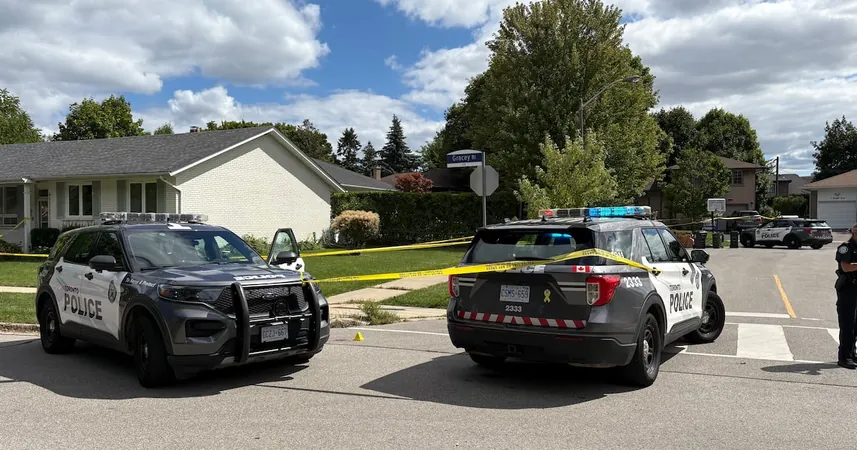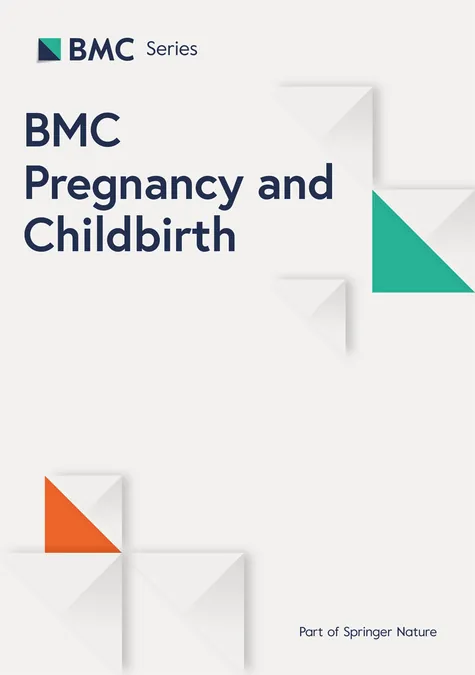
Alarming Rise in Firearm Deaths Among Teens: A Deep Dive into Urban vs Rural Trends
2025-09-01
Author: Jacob
A Disturbing Trend in Youth Firearm Deaths
The chilling reality of youth firearm-related deaths in the United States has taken a center stage, with research illuminating the stark differences between middle and high school-aged adolescents in urban and rural areas. With an overarching public health crisis looming, it's crucial to understand the unique circumstances and developmental stages that these young individuals navigate.
The Grim Statistics
Data from the Centers for Disease Control and Prevention reveals that since 2017, firearms have overtaken motor vehicle accidents as the leading cause of death for youths aged 11-18. Alarmingly, from 2018 to 2022, reported firearm homicides surged by an astonishing 79.3%, eclipsing rates of suicide and unintentional deaths. In stark contrast, rural youth are more likely to succumb to suicide, indicating a pressing need for tailored interventions.
The Adolescence Factor
Adolescence marks a tumultuous transition filled with biological and social shifts. The quest for independence, combined with heightened risk-taking behaviors, means that older teens face significant perils, particularly related to firearms. Research indicates that those aged 16 show peak mortality rates from these incidents—reflecting a harrowing connection between developmental changes and risk exposure.
Urban vs. Rural: A Tale of Two Realities
Firearms carry distinct cultural implications depending on geographic settings. In rural areas, guns often represent tradition and recreational enjoyment, yet they also lead to higher adolescent risks, including elevated rates of unsecured firearm access. Therefore, while urban youth may face higher homicide rates, rural adolescents remain vulnerable to suicide, highlighting a critical divergence in public health risks.
The Call for Targeted Prevention Strategies
This study underscores the urgent need for prevention strategies attuned to the unique challenges faced by urban and rural adolescents. Effective interventions must consider where these adolescents are in their developmental journey, fostering tailored responses that resonate with their cultural contexts and social environments.
Conclusion: Bridging the Gap
As firearm deaths climb, the urgency for comprehensive and nuanced prevention strategies has never been stronger. Addressing the specific needs of adolescents—whether rural or urban—will be pivotal in curbing this crisis and safeguarding the lives of future generations.









 Brasil (PT)
Brasil (PT)
 Canada (EN)
Canada (EN)
 Chile (ES)
Chile (ES)
 Česko (CS)
Česko (CS)
 대한민국 (KO)
대한민국 (KO)
 España (ES)
España (ES)
 France (FR)
France (FR)
 Hong Kong (EN)
Hong Kong (EN)
 Italia (IT)
Italia (IT)
 日本 (JA)
日本 (JA)
 Magyarország (HU)
Magyarország (HU)
 Norge (NO)
Norge (NO)
 Polska (PL)
Polska (PL)
 Schweiz (DE)
Schweiz (DE)
 Singapore (EN)
Singapore (EN)
 Sverige (SV)
Sverige (SV)
 Suomi (FI)
Suomi (FI)
 Türkiye (TR)
Türkiye (TR)
 الإمارات العربية المتحدة (AR)
الإمارات العربية المتحدة (AR)